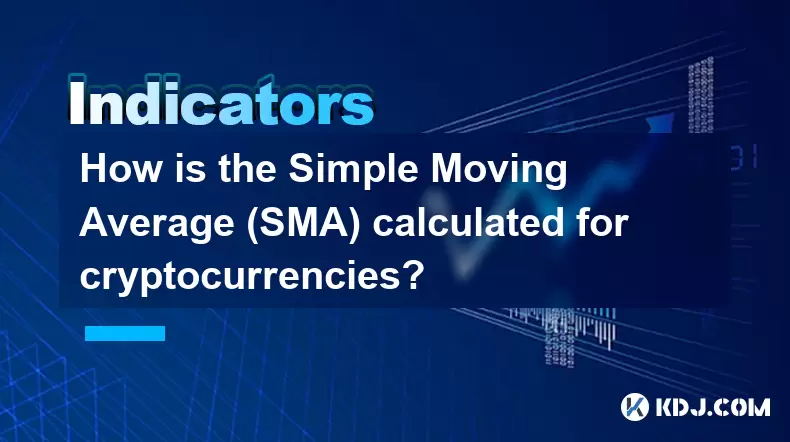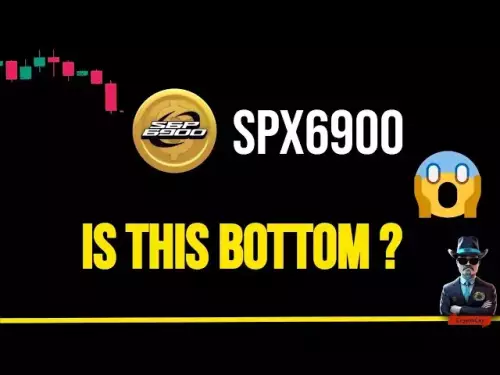-
 Bitcoin
Bitcoin $113100
-1.74% -
 Ethereum
Ethereum $4800
1.16% -
 XRP
XRP $3.041
0.36% -
 Tether USDt
Tether USDt $0.9999
0.02% -
 BNB
BNB $876.6
-0.40% -
 Solana
Solana $205.1
0.96% -
 USDC
USDC $0.0000
0.00% -
 Dogecoin
Dogecoin $0.2345
-0.10% -
 TRON
TRON $0.3629
0.40% -
 Cardano
Cardano $0.9260
1.91% -
 Chainlink
Chainlink $26.20
0.28% -
 Hyperliquid
Hyperliquid $46.04
2.89% -
 Sui
Sui $3.722
0.22% -
 Stellar
Stellar $0.4113
-0.53% -
 Ethena USDe
Ethena USDe $1.000
0.03% -
 Bitcoin Cash
Bitcoin Cash $590.3
0.39% -
 Avalanche
Avalanche $25.82
-0.01% -
 Hedera
Hedera $0.2504
-0.92% -
 Litecoin
Litecoin $119.1
-1.33% -
 UNUS SED LEO
UNUS SED LEO $9.598
0.03% -
 Toncoin
Toncoin $3.315
-1.69% -
 Shiba Inu
Shiba Inu $0.00001308
-1.02% -
 Uniswap
Uniswap $11.06
-2.10% -
 Polkadot
Polkadot $4.149
-1.10% -
 Dai
Dai $1.000
0.03% -
 Aave
Aave $350.7
-1.07% -
 Cronos
Cronos $0.1587
0.97% -
 Bitget Token
Bitget Token $4.664
-0.71% -
 Monero
Monero $274.5
3.42% -
 Ethena
Ethena $0.7021
-4.70%
How is the Simple Moving Average (SMA) calculated for cryptocurrencies?
The Simple Moving Average (SMA) helps crypto traders identify trends by smoothing price data, with common periods like 50-day and 200-day used to spot bullish or bearish signals.
Aug 10, 2025 at 10:56 am

Understanding the Simple Moving Average (SMA) in Cryptocurrency Analysis
The Simple Moving Average (SMA) is a foundational tool used by traders and analysts to assess price trends in the cryptocurrency market. It provides a smoothed representation of price data over a specified time period, helping to filter out noise and identify directional momentum. The SMA is calculated by taking the arithmetic mean of a given set of prices over a specific number of time periods. For cryptocurrencies, this typically involves using closing prices from candlestick charts—such as 1-minute, 1-hour, or daily intervals.
Each data point in an SMA is the average of the previous "n" periods. For example, a 20-day SMA on a daily chart is the average of the last 20 closing prices. As new price data becomes available, the oldest price is dropped from the calculation, and the newest one is added, causing the average to "move" forward in time. This rolling nature gives the indicator its name.
Step-by-Step Calculation of SMA for Cryptocurrencies
To compute the SMA for any cryptocurrency, follow these steps:
- Collect the closing prices for the desired number of periods. For instance, if calculating a 7-day SMA for Bitcoin, gather the closing prices from the past 7 days.
- Add all the closing prices together. If the prices are $30,000, $30,500, $29,800, $31,000, $31,200, $31,800, and $32,000, their sum is $216,300.
- Divide the total sum by the number of periods. In this case, $216,300 divided by 7 equals $30,900.
- The result, $30,900, is the 7-day SMA for Bitcoin on that day.
This process repeats daily, with the oldest price (e.g., $30,000) being removed and the newest closing price added the following day. The updated sum is then divided by 7 again to generate the new SMA value. This continuous recalculation ensures the SMA reflects current market conditions.
Choosing the Right Time Frame for SMA in Crypto Trading
The effectiveness of the SMA depends heavily on the selected time frame. Traders use different periods based on their strategy and time horizon. Common SMA periods in cryptocurrency trading include:
- Short-term SMAs such as the 9-day or 20-day SMA are used by day traders and scalpers to capture quick price movements.
- Medium-term SMAs like the 50-day SMA help identify intermediate trends and are often used in swing trading.
- Long-term SMAs such as the 100-day or 200-day SMA are favored by investors to determine the overall market direction and potential support or resistance zones.
For example, a 200-day SMA on Bitcoin’s daily chart is widely watched as a benchmark for bull and bear markets. When the price trades above this SMA, it may signal a bullish trend; trading below it could indicate bearish sentiment. The choice of period should align with the trader’s goals and the volatility characteristics of the specific cryptocurrency.
Using SMA Crossovers to Generate Trading Signals
One of the most popular applications of the SMA in crypto trading is the SMA crossover strategy. This involves using two SMAs—one short-term and one long-term—to identify potential entry and exit points.
- When the short-term SMA crosses above the long-term SMA, it generates a bullish signal, often interpreted as a buy opportunity.
- Conversely, when the short-term SMA crosses below the long-term SMA, it produces a bearish signal, suggesting a possible sell or short position.
For instance, a trader might use a 50-day SMA and a 200-day SMA on Ethereum’s price chart. If the 50-day SMA moves above the 200-day SMA, this is known as a “golden cross” and is considered a strong bullish indicator. The opposite, a “death cross,” occurs when the 50-day SMA falls below the 200-day SMA, signaling potential downtrend continuation.
This method works best in trending markets but can produce false signals in sideways or choppy conditions. Combining SMA crossovers with volume analysis or other technical indicators like RSI can improve accuracy.
Limitations and Considerations When Applying SMA to Crypto
While the SMA is widely used, it has inherent limitations due to its design. Because it assigns equal weight to all data points in the period, older prices influence the average just as much as recent ones. This can delay the SMA’s response to sudden price changes, making it a lagging indicator.
In the highly volatile cryptocurrency market, this lag can result in delayed signals. For example, during a rapid Bitcoin price surge, the SMA might not reflect the new trend until several days later, causing traders to enter late. Some traders mitigate this by using the Exponential Moving Average (EMA), which gives more weight to recent prices.
Additionally, SMAs can produce misleading signals during consolidation phases. When prices move sideways, the SMA flattens and may generate repeated crossover signals that lead to losses if acted upon. Traders should always consider the broader market context and use SMAs as part of a comprehensive analysis framework.
How to Implement SMA on Crypto Trading Platforms
Most cryptocurrency trading platforms and charting tools offer built-in SMA functionality. To apply it:
- Open a price chart for the desired cryptocurrency on platforms like TradingView, Binance, or Coinbase Pro.
- Locate the "Indicators" or "Studies" section and search for "Simple Moving Average."
- Input the preferred period (e.g., 20, 50, 200).
- Choose the price source (typically "close") and color for visualization.
- Click "Add" to display the SMA line on the chart.
Multiple SMAs can be added simultaneously to compare different time frames. Custom alerts can also be set to notify when a crossover occurs or when price interacts with a specific SMA level. These features allow traders to monitor conditions in real time without manual calculations.
Frequently Asked Questions
Can SMA be calculated using prices other than closing prices?
Yes, while the closing price is most commonly used, SMA can be calculated using opening, high, low, or even volume-weighted prices. However, closing prices are preferred because they represent the final consensus of value for that period.
Is SMA effective for all cryptocurrencies?
SMA works across all cryptocurrencies, but its reliability varies with market liquidity and volatility. Major coins like Bitcoin and Ethereum tend to produce clearer SMA signals due to higher trading volume and smoother price action.
How does SMA differ from EMA in crypto analysis?
The SMA treats all data points equally, while the EMA gives more weight to recent prices. As a result, EMA reacts faster to price changes, making it more suitable for short-term trading in fast-moving crypto markets.
Can SMA be used on non-daily time frames?
Absolutely. SMA can be applied to any time frame, including 1-minute, 15-minute, 4-hour, or weekly charts. The interpretation depends on the trader’s strategy and the chosen period relative to the chart’s interval.
Disclaimer:info@kdj.com
The information provided is not trading advice. kdj.com does not assume any responsibility for any investments made based on the information provided in this article. Cryptocurrencies are highly volatile and it is highly recommended that you invest with caution after thorough research!
If you believe that the content used on this website infringes your copyright, please contact us immediately (info@kdj.com) and we will delete it promptly.
- MAGACOIN Finance: Can This Crypto Presale Deliver Explosive Gains?
- 2025-08-25 09:25:14
- XRP Price, Solana, and Meme Coins: What's Hot in the Crypto Streets?
- 2025-08-25 09:25:14
- Cardano, Bitcoin, and Presales: Navigating the 2025 Crypto Landscape, MAGACOIN FINANCE in Focus
- 2025-08-25 09:30:12
- Hyperliquid, WLFI-USD, and DeFi Equity: A Deep Dive
- 2025-08-25 09:45:22
- BlockDAG: A Layer 1 Solution Thriving in a Volatile Market
- 2025-08-25 10:05:22
- Ripple's RLUSD and Japan's Regulation: A Match Made in Digital Finance Heaven
- 2025-08-25 07:05:29
Related knowledge

What does it mean when the +DI and -DI cross frequently in the DMI indicator but the ADX is flattening?
Aug 11,2025 at 03:15am
Understanding the DMI Indicator ComponentsThe Directional Movement Index (DMI) is a technical analysis tool composed of three lines: the +DI (Positive...

What does the sudden appearance of a "dark cloud cover" candlestick pattern during an uptrend indicate?
Aug 13,2025 at 11:35am
Understanding the 'Dark Cloud Cover' Candlestick PatternThe dark cloud cover is a bearish reversal pattern in technical analysis that typically appear...

What does it mean when the moving average, MACD, and RSI all send buy signals simultaneously?
Aug 11,2025 at 01:42pm
Understanding the Convergence of Technical IndicatorsWhen the moving average, MACD, and RSI all generate buy signals at the same time, traders interpr...

What does it mean when both the KDJ indicator and the RSI show overbought signals simultaneously?
Aug 13,2025 at 11:35am
Understanding the KDJ Indicator in Cryptocurrency TradingThe KDJ indicator is a momentum oscillator derived from the Stochastic Oscillator, widely use...

What does it mean when the price is trading above the SAR indicator but the red dots are densely packed?
Aug 09,2025 at 11:49pm
Understanding the SAR Indicator and Its Visual SignalsThe SAR (Parabolic Stop and Reverse) indicator is a technical analysis tool used primarily to de...

What does it mean when the candlestick chart forms a "Morning Star" but trading volume is sluggish?
Aug 12,2025 at 06:28pm
Understanding the Morning Star Candlestick PatternThe Morning Star is a three-candle bullish reversal pattern commonly observed in cryptocurrency pric...

What does it mean when the +DI and -DI cross frequently in the DMI indicator but the ADX is flattening?
Aug 11,2025 at 03:15am
Understanding the DMI Indicator ComponentsThe Directional Movement Index (DMI) is a technical analysis tool composed of three lines: the +DI (Positive...

What does the sudden appearance of a "dark cloud cover" candlestick pattern during an uptrend indicate?
Aug 13,2025 at 11:35am
Understanding the 'Dark Cloud Cover' Candlestick PatternThe dark cloud cover is a bearish reversal pattern in technical analysis that typically appear...

What does it mean when the moving average, MACD, and RSI all send buy signals simultaneously?
Aug 11,2025 at 01:42pm
Understanding the Convergence of Technical IndicatorsWhen the moving average, MACD, and RSI all generate buy signals at the same time, traders interpr...

What does it mean when both the KDJ indicator and the RSI show overbought signals simultaneously?
Aug 13,2025 at 11:35am
Understanding the KDJ Indicator in Cryptocurrency TradingThe KDJ indicator is a momentum oscillator derived from the Stochastic Oscillator, widely use...

What does it mean when the price is trading above the SAR indicator but the red dots are densely packed?
Aug 09,2025 at 11:49pm
Understanding the SAR Indicator and Its Visual SignalsThe SAR (Parabolic Stop and Reverse) indicator is a technical analysis tool used primarily to de...

What does it mean when the candlestick chart forms a "Morning Star" but trading volume is sluggish?
Aug 12,2025 at 06:28pm
Understanding the Morning Star Candlestick PatternThe Morning Star is a three-candle bullish reversal pattern commonly observed in cryptocurrency pric...
See all articles

























































































